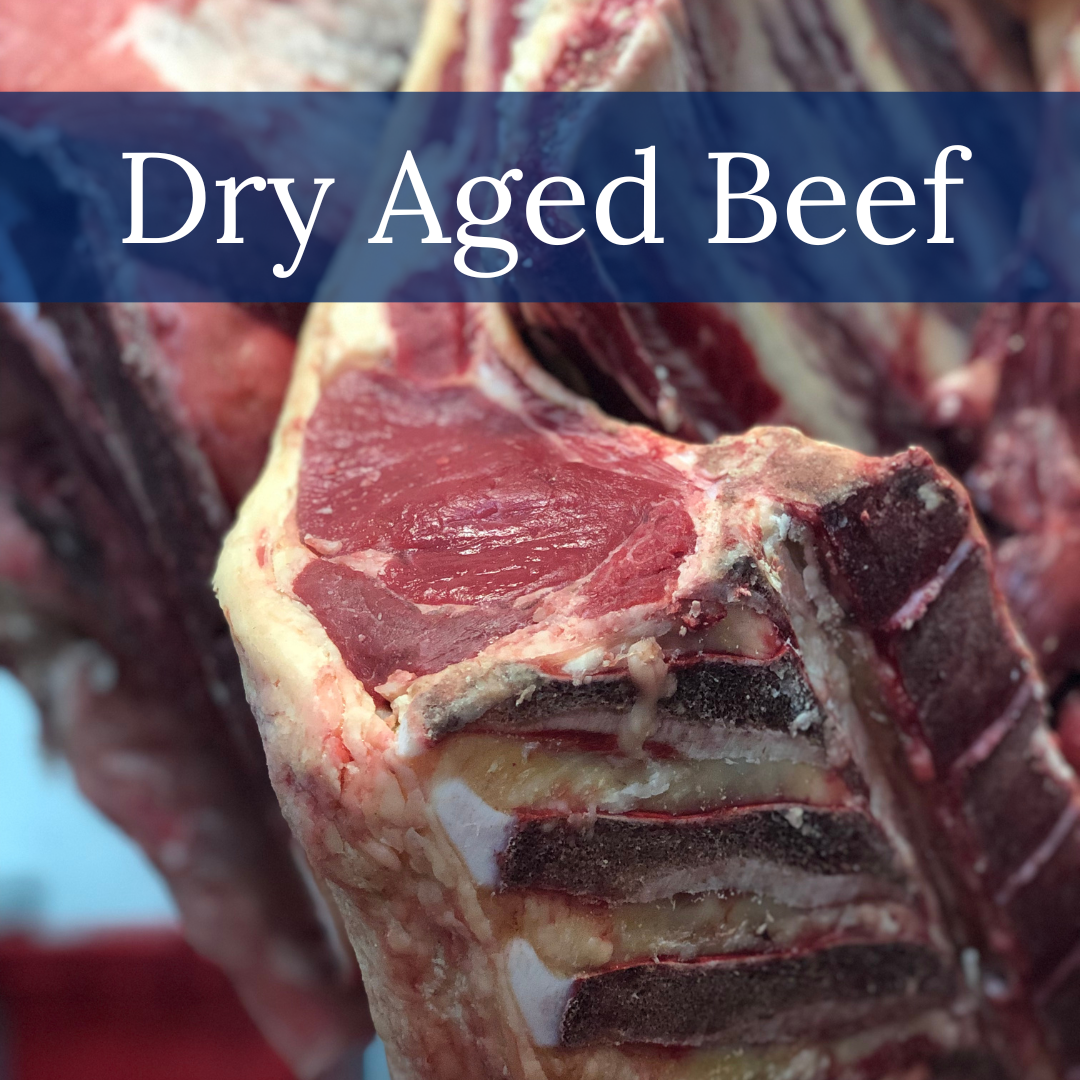
Dry Ageing – What’s it All About?
A Dry Aged cut of beef creates that wonderful melt-in-the-mouth sensation and has a superior flavour and tenderness. Due to the expense and detailed process required, dry aged meat is generally only found at premium butchers and the best restaurants.
Forty years ago all beef was dry aged. Butchers discovered that beef carcasses that were allowed to hang for several days tended to be more tender and flavourful than those that were processed and eaten immediately. While dry ageing had a positive impact on flavour and tenderness, it had a negative impact on yield. Dry aged beef lost water moisture and, therefore, weight. And less weight equals more cost to the customer.
Wet ageing came in with vacuum packing in the early ‘60s. In this process, meat is allowed to sit in a vacuum packed bag in its own juices for 7-28 days, at a temperature of 1 degree. Tenderness is positively impacted by wet ageing, but flavour is not, since there is no loss of moisture. Wet ageing is a much less expensive proposition for the beef industry.
The process of dry ageing meat involves drying and dehydrating beef in a controlled environment. Higher grades of meat are used as the process requires meat with a large, evenly distributed fat content. The meat is hung in a controlled, closely watched, refrigerated environment. The temperature needs to stay at a constant 0 degrees and the humidity must be at 85 per cent. Too warm the meat will spoil and too cool the meat will freeze, stopping the ageing process. There must also be constant air flow around the meat to control bacteria. The last requirement in the process, and most importantly, is a very experienced butcher to keep an eye on the ageing meat.
In the first 14-20 days, enzymes that naturally occur in the beef break down the protein and fat strands, making them smaller, this helps with tenderness. They also give off gas as a by-product which improves flavour. The beef then sits quietly and dehydrates. This has the effect of concentrating the flavours and creating the great taste. It also makes the meat denser giving it a wonderful richness and intensity. Dry Aged meat can be aged anywhere from 20 days to 120 or more. A The Free Range Butcher our beef is dry aged to 28 days.
When cooking dry aged beef the key is not overcook it. The meat shouldn’t be cooked to more than medium-rare, and don’t rest it too long: there is little juice in the steak and it will dry out.
So, what are our favourite cuts of dry aged beef? Ben votes for Scotch Fillet, Will votes for Eye Fillet, and for me I can’t go past a great New York steak.
Leave a comment below and tell us what’s your favourite cut of meat, and how you like to cook it.
dry aged, dry ageing, feature, meat enzymes, wet ageing

